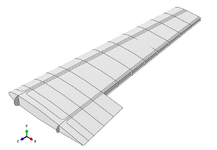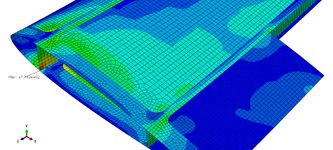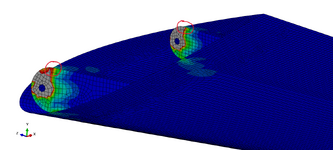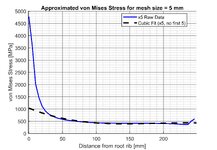IcarusAero223
Aerospace
- Mar 10, 2024
- 12
Hello everyone!
I'm modelling a composite wing and am exhibiting a mesh singularity at the spar web/cap connection.
Solutions I've tried:
And as you can see none of it really worked so I decided to come here and see if anyone has an answer to this little problem I have.
I'm assuming the fix might not be the modelling approach but rather geometry modification and for that I have no more ideas unfortunately.
Any help is appreciated!![[bigears] [bigears] [bigears]](/data/assets/smilies/bigears.gif)





I'm modelling a composite wing and am exhibiting a mesh singularity at the spar web/cap connection.
Solutions I've tried:
- Modelling softer boundary conditions through springs
- Reducing the stiffness of the spar webs
- Pulling out spar web surfaces and modelling BC's through idealized bolted contact
And as you can see none of it really worked so I decided to come here and see if anyone has an answer to this little problem I have.
I'm assuming the fix might not be the modelling approach but rather geometry modification and for that I have no more ideas unfortunately.
Any help is appreciated!
![[bigears] [bigears] [bigears]](/data/assets/smilies/bigears.gif)





